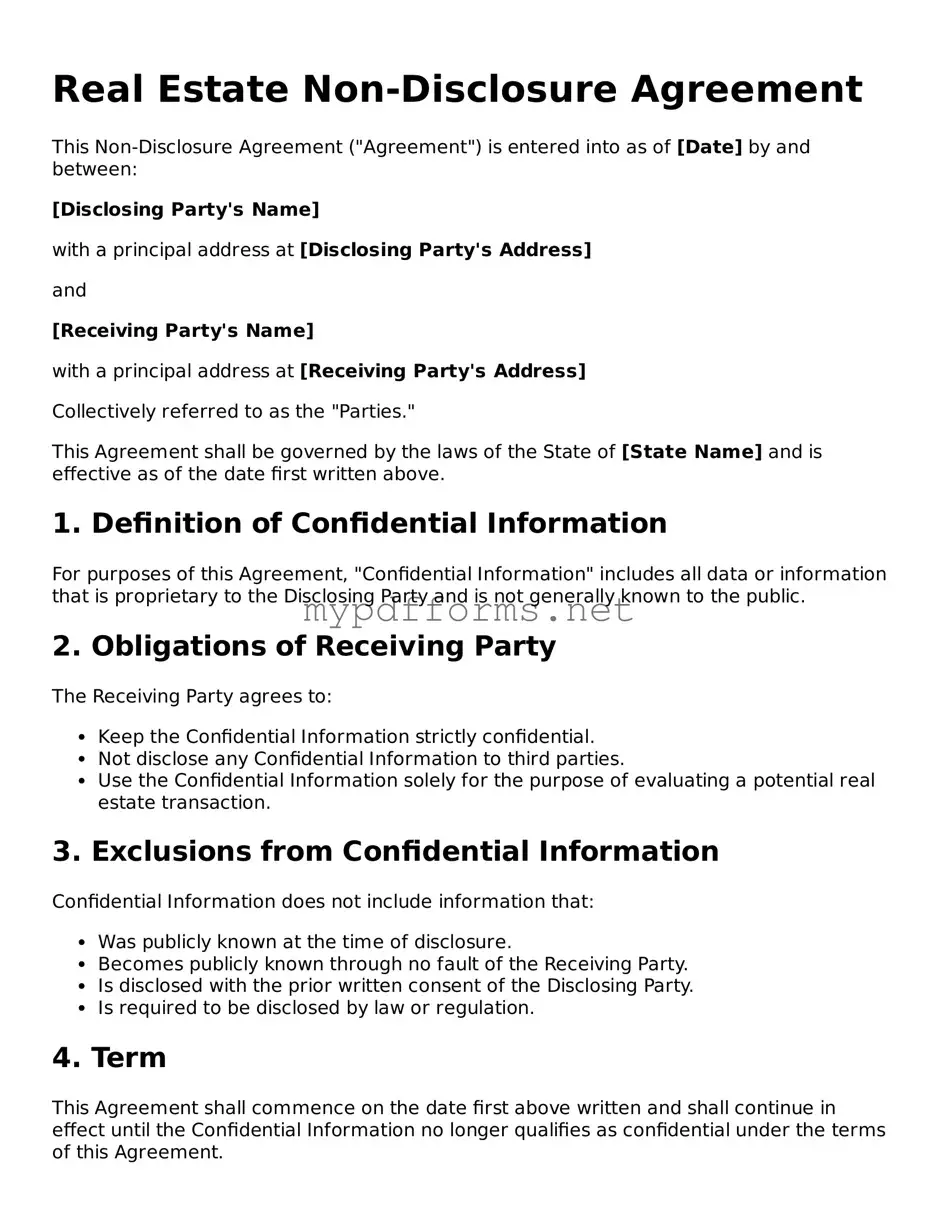Real Estate Non-Disclosure Agreement Template
A Real Estate Non-Disclosure Agreement (NDA) is a legal document that ensures confidentiality between parties involved in a real estate transaction. This agreement protects sensitive information, allowing parties to share details without the fear of public disclosure. To safeguard your interests, consider filling out the form by clicking the button below.
Modify Document Here
